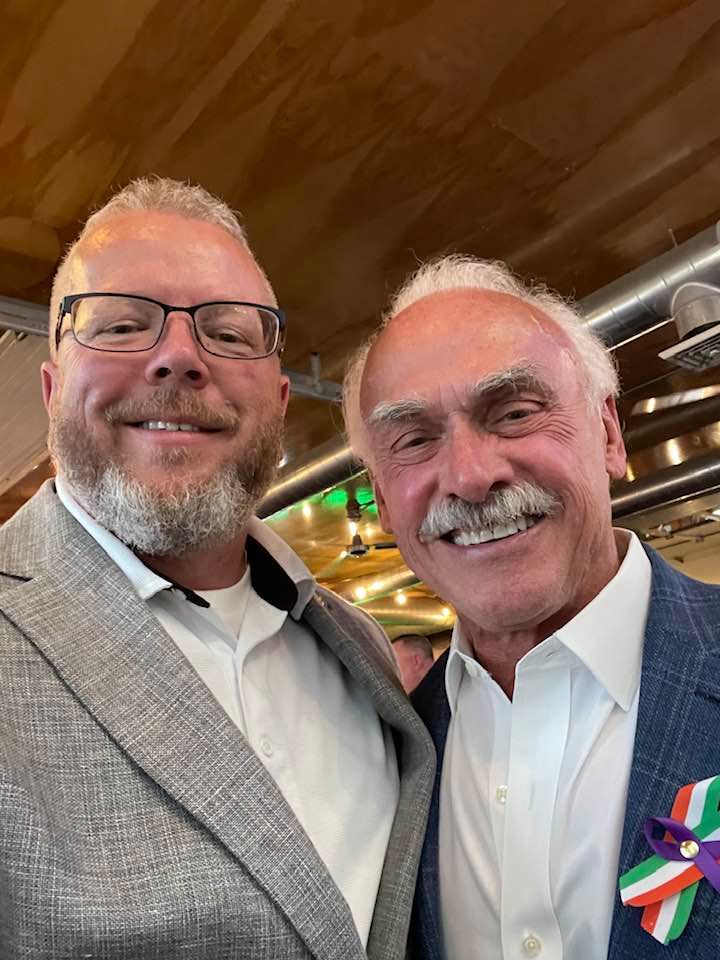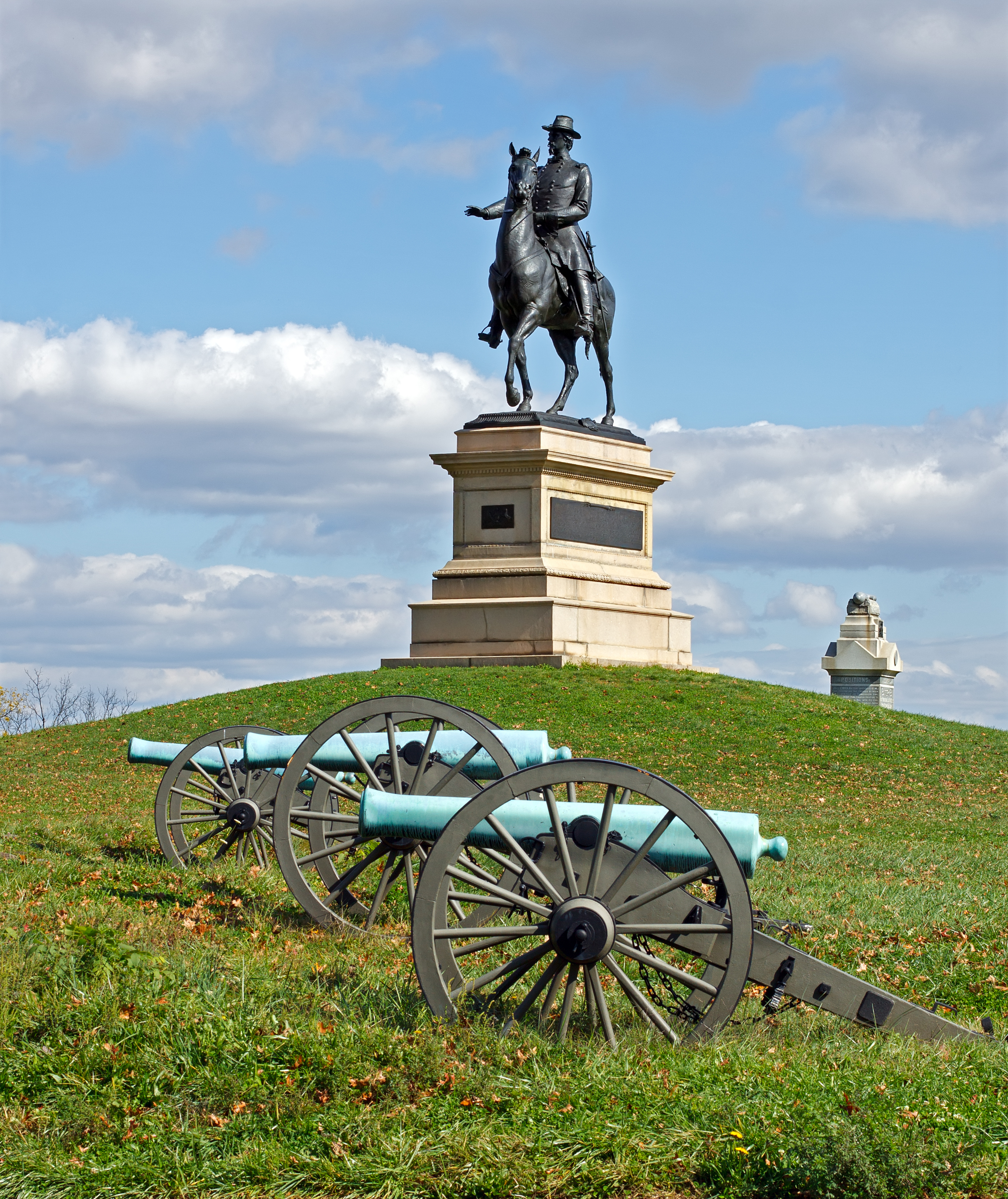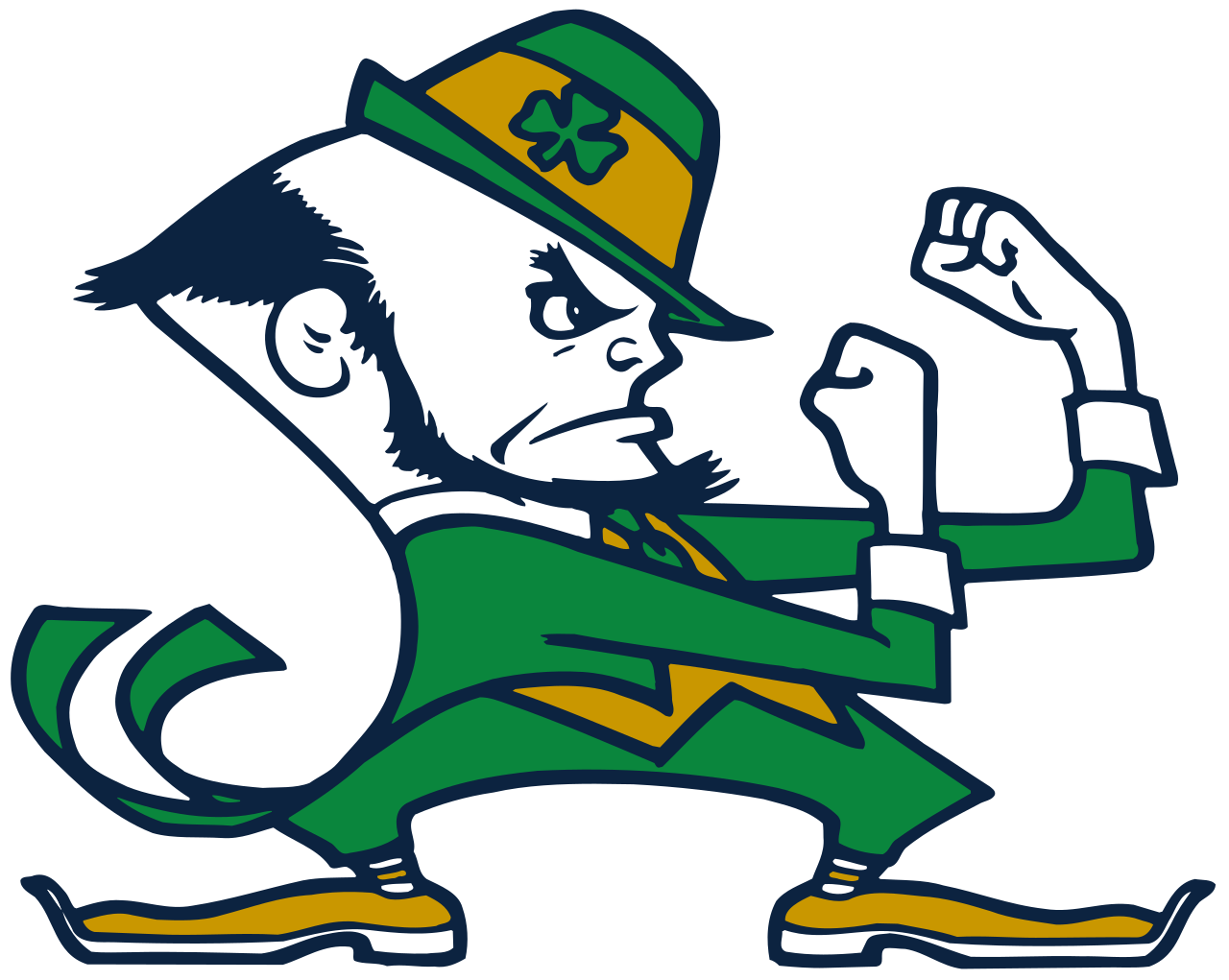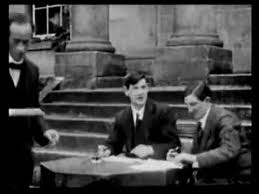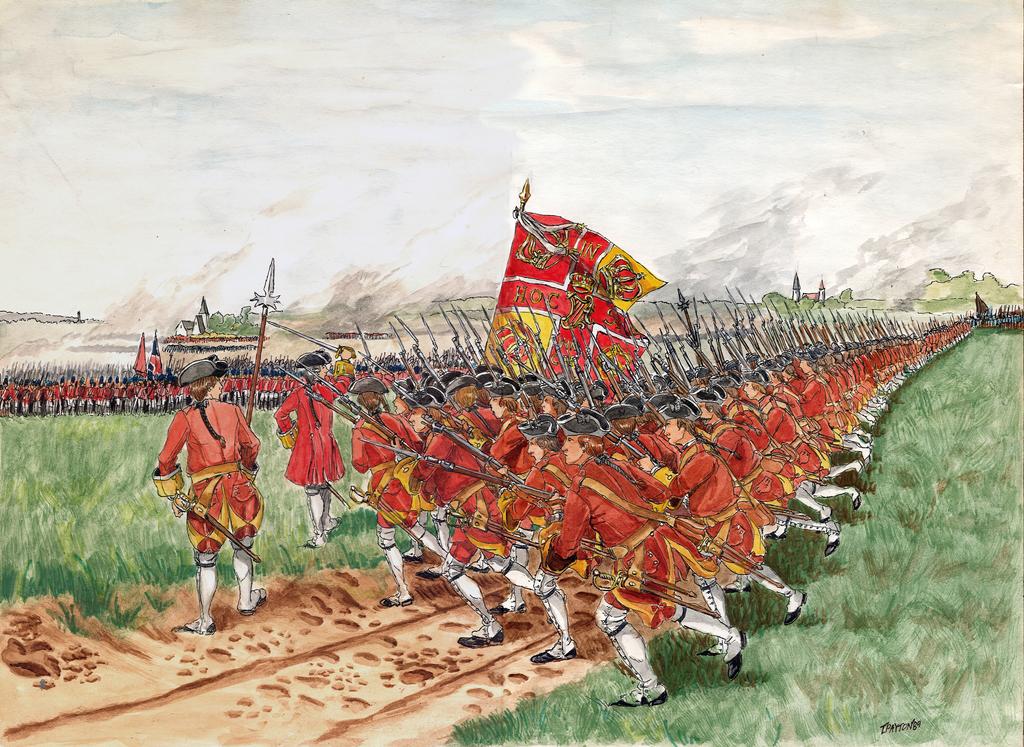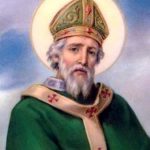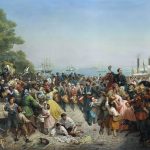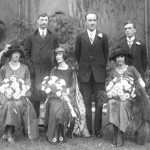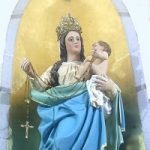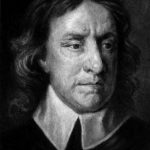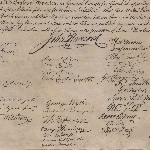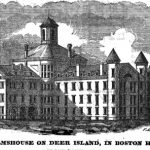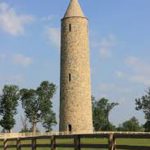The AOH and LAOH honored legendary Pittsburgh Steeler and inspirational veteran advocate Rocky Bleier with the JFK Memorial Medal at the recent convention in in Pittsburgh. AOH National President Daniel J. O’Connell with 2022 JFK Recipient Rocky Bleier, The first award of the medal was made in 1966 to the Hon. James Farley, former Postmaster General under Franklin D. Roosevelt. Farley, the grandson of Irish immigrants, managed FDR's presidential campaigns in 1932 and 1936 and was an influential member of the New Deal "Brain Trust". The University of Notre Dame awarded Farley its … [Read more...] about The First JFK Medal
Historical Happenings
Hancock and Armistead
A monument to Major General Winfield Scott Hancock at Gettysburg National Military Park. It was dedicated in 1896 by the Commonwealth of Pennsylvania. Historians and Hollywood producers alike have held up the story of Union Major General Winfield Scott Hancock and Confederate Brigadier General Lewis Armistead to illustrate the tragedy of internecine warfare. Hancock and Armistead had developed a friendship when stationed together in California before the war, with Armistead famously sending Mrs. Hancock the Armistead family bible for safekeeping as he left to join the Confederate As … [Read more...] about Hancock and Armistead
Bloody Sunday, State Violence and Legitimacy
The German Sociologist Max Weber famously defined the modern state as the “human community that claims the monopoly of the legitimate use of physical force within a given territory.” (Emphasis added). The violence in Dublin on Sunday November 21, 1920, “Bloody Sunday,” began with the culmination of Michael Collins’ masterful counterintelligence operation – nineteen suspected British intelligence agents were shot by members of Collins’ special unit known as “the Squad,” augmented by members of the Dublin Brigade of the IRA, including future Taoiseach Sean Lemass. The British had dominated Irish … [Read more...] about Bloody Sunday, State Violence and Legitimacy
Notre Dame, Nativism and the “Fighting Irish”
The country is again in the midst of a movement aimed at retiring team names and mascots deemed to be offensive. As with prior such movements, the “Fighting Irish” moniker and leprechaun mascot, with his classic “fisticuffs stance”, have entered the discussion. Those objecting to the nickname are presumably well-intentioned. But is “Fighting Irish” a slur? Or does the term have an origin of which the University, its students, alumni and the countless “subway alumni” can rightfully be proud? Long before Notre Dame was established, the Irish soldier had a reputation for military prowess among … [Read more...] about Notre Dame, Nativism and the “Fighting Irish”
ROBERT EMMET
The United Irishmen were a group of Catholics and Protestants united for Irish independence who rose in 1798. The English put down the rising with extreme brutality instituting a ‘campaign of frightfulness’, as Seamus MacManus called it, ‘to break the spirit of the Irish that they should never dare to dream of liberty again.’ They even banned the color green which was the symbol of the union of Protestant Orange and Catholic Blue. In retaliation, one young man contacted leaders still at large and planned another rising. He entered an alliance with Napoleon’s minister Talleyrand and planned to … [Read more...] about ROBERT EMMET
FONTENOY
Any reader of America’s Civil War history knows of the Irish Brigade and their battle cry ‘Remember Fontenoy’, but a true understanding of that emotion is often not given other than to note that it refers to the Irish Brigade in the French Army. To understand it fully we must go back to the origins of the first Irish Brigade in a trade of French soldiers for Irish made in 1690. When William of Orange was invited by a Protestant Parliament to take the crown of England deposing Catholic James II, France's Catholic King Louis XIV favored Stuart King James II in his struggle to regain his throne. … [Read more...] about FONTENOY
THE CLARKES
On 3 May 1916, the future of Ireland was decided. It was the day that the executions of the latest generation of patriots began with the deaths of Padraic Pearse, Tom Clarke and Thomas McDonagh. What made it different from the deaths of Tone, Emmet and other patriots was Thomas James Clarke and his wife Kathleen. For Thomas J. Clarke it all began when he was raised in Dungannon, Co. Tyrone and joined the Irish Republican Brotherhood (IRB) at age 20. As a result of his membership he suffered a 15-year imprisonment so brutal that two of his fellow inmates went insane. To maintain his … [Read more...] about THE CLARKES
THE IRISH-SPANISH CONNECTION
The term Iberian, as used by ancient authors, referred to the peninsula occupied by Spain and Portugal and may have come from the peninsula's second longest river called Iber by the Greeks. Hecataeus of Miletus, an early Greek geographer and world map-maker was the first known to use the term Iberia at about 500 BC. The term also refers to the all the inhabitants of the Iberian peninsula, regardless of ethnic differences (Pre-Indo-European and Celtic). By the 6th century, the Iberians living on the eastern and southern coasts of the Peninsula traded across the Mediterranean and absorbed … [Read more...] about THE IRISH-SPANISH CONNECTION
St. Patrick’s Day Traditions
Each year around March 17, the name of St. Patrick appears in every major publication in the civilized world - sometimes with honor and sometimes with scorn - often due to the conduct of those who celebrate his memory at affairs which bear his name. Of the many things written about this holy man, some are true, some misleading, and some false. St. Patrick was Italian; St. Patrick drove the snakes from Ireland; St. Patrick was the first to bring Christianity to Ireland - all of these statements are false! Let’s take them one at a time. Some claim St. Patrick to be Italian because he was … [Read more...] about St. Patrick’s Day Traditions
THE IRISH BRIGADE COMES HOME
Prior to the American Civil War, the regular Army was small reflecting the logic that America was best defended by volunteer militia units. Many were little more than glorified fraternal organizations, filled with men who liked to parade, drink and sometimes drill. There were groups like the German Black Sharp-shooters and Hungarian Kossuth Rifles among others. Not to be outdone, the Irish formed the O'Connell Guards, Irish Rifles and Irish Zouaves. In New York, the more serious of these units were mustered into a formal state militia as was done in many states across the U.S. On October 12, … [Read more...] about THE IRISH BRIGADE COMES HOME
THE IRISH NEW YEAR’S EVE
You saw it; I saw it; in fact, almost everyone on the planet saw it. I’m not talking about the moon or the sun, but something a whole lot brighter – at least for the Irish. It was the magnificent Waterford Crystal Ball atop Times Square in New York City that has become an icon of introducing a new year to millions of celebrants. Regardless of what time zone you may be in, you saw it, but did you know the connection of the Irish with that unique celebration? New Year’s Eve in Times Square had been celebrated for many years as crowds assembled to cheer at midnight. In 1888, an Irishman … [Read more...] about THE IRISH NEW YEAR’S EVE
SENSELESS DEATH IN DECEMBER
Rory O'Connor was born in Dublin in 1883. He was educated at St. Mary’s College and Clongowes Wood College, Dublin with his close friend, Kevin O’Higgins. After College, he worked as a railway engineer in Ireland, then moved to Canada in 1911 to work as a railway engineer. He became active in the Fenian Brotherhood and returned to Ireland in 1915 at Joseph Plunkett's request. He joined the Ancient Order of Hibernians and served in the GPO in the Easter Rising as an intelligence officer. He was wounded during reconnaissance at the College of Surgeons and was interned after the surrender. … [Read more...] about SENSELESS DEATH IN DECEMBER
THE BOY PATRIOT
In 1920, Ireland was in the midst of a War of Independence led by Michael Collins and the original Irish Republican Army formed from post-1916 Volunteers, Hibernian Rifles and returned prisoners who’d been illegally interned after the Easter Rising. On 11 November 1919 the British government had recruited returning veterans from the recently ended Great War to strengthen the Royal Irish Constabulary (police) in Ireland and oppose the IRA. They advertized for men willing to ‘face a rough and dangerous task’ in Ireland. Many just returned from the war found unemployment and few firms needing … [Read more...] about THE BOY PATRIOT
OUR LADY OF LIMERICK
Queen Elizabeth I had outlawed the Catholic Church and it was an act of treason to shelter a priest. Sir John Bourke of Brittas, Co. Limerick was a secret member of the Rosary Confraternity of the hidden Dominicans of the City. He promoted the Rosary in his family and locality risking the enmity of the Crown by his open avowal of the Catholic Faith and protection of hunted clergy. When Elizabeth died and James, son of Catholic Mary, Queen of Scots, came to the throne in 1603, there was a pause in the persecution as James I had promised that he would not persecute “any that will be quiet and … [Read more...] about OUR LADY OF LIMERICK
THE CURSE OF CROMWELL
In 1649, a bitter struggle between King Charles of England and his Puritan Parliament erupted in a civil war won by a Puritan Model Army led by Oliver Cromwell. These men were the foundation of the British Army. Before that time, freelance fighters and soldiers of fortune were recruited for specific campaigns. Now a regular army was formed. British Major-General Frank Kitson wrote in his book, Low Intensity Operations, When the regular army was first raised in the 17th century, suppression of the Irish' was coupled with the defense of the Protestant Religion as one of the two main reasons … [Read more...] about THE CURSE OF CROMWELL
GROSSE ILE REMEMBERED
Ten years ago, on the 15th of August, 2009, members of the AOH gathered on Grosse Ile in the St. Lawrence River just off Quebec to commemorate a centennial. The American AOHs of U.S. and Canada had erected a 50-foot Celtic Cross in sensitive recognition of the thousands of Irish who sleep there in mass graves after fleeing the Great Hunger in Ireland. It was dedicated on the Feast of the Assumption, August 15, 1909 and here we were again, 100 years later, with the late Marianna Gallagher – grand-daughter of the AOH committee chairman who erected the cross – to commemorate the Centennial … [Read more...] about GROSSE ILE REMEMBERED
IRISH SIGNERS OF THE DECLARATION OF INDEPENDENCE
On 4 July 1776, the Philadelphia State House was packed, despite a sweltering heat, as Secretary Charles Thomson of Derry read a Declaration that Adams, Jefferson, Franklin and Livingston had composed and that he, Thomson, had drafted. It was a declaration explaining why their revolutionary action was justified. After a full day of debate, modifying copy and amendments, Secretary Thomson recorded the changes and America's Declaration of Independence was complete! The formal copy would not be ready for signature until August, but the public first heard that document read on 8 July 1776 by Col. … [Read more...] about IRISH SIGNERS OF THE DECLARATION OF INDEPENDENCE
DEER ISLAND
In 1847, a crisis hit Boston as ‘coffin ships’ unloaded hordes of Irish exiles fleeing ‘An Gorta Mor’ – Ireland’s Great Hunger. It was no surprise that many were sick after the 6-to-8-week Atlantic crossing. With men and women packed into steerage so tightly, there was no way to preserve privacy or modesty. One report related: “I have known cases of females who had to sit up all night upon their boxes in steerage, because they could not think of going into a bed with a strange man.” Disease spread rapidly and lethally. About 25,000 arrived in ‘Black ‘47’ with many suffering from typhus, … [Read more...] about DEER ISLAND
IRISH ROUND TOWERS
The ancient Round Towers that dot the Irish landscape were erected by Irish Christian monks and can also be found in areas where they served like the two that stand in Scotland and one on the Isle of Man. However, in Ireland where they originated, about 120 are thought to have existed. Today most are in ruins, but 18 to 20 still stand in almost perfect condition. The history and purpose of the Towers are widely debated. Some believe that they were Bell Towers to call the faithful to prayer since they were mostly found near churches and monasteries. Some say they could have served as lookout … [Read more...] about IRISH ROUND TOWERS
DUBLIN BOMBED
The city of Dublin is no stranger to bombs, from the British assault in 1916 to the removal of Lord Nelson’s statue in 1966 on the 50th anniversary of the Easter Rising. Yet one that has largely been forgotten occurred 78 years ago in 1941 during WWII, referred to as ‘the Emergency’ in Ireland. The story began in April when German air raids bombed Belfast. The Belfast Blitz consisted of four German air raids on strategic targets in the city of Belfast causing high casualties. The first was on the night of 7–8 April 1941, a small attack which probably took place only to test Belfast's defenses … [Read more...] about DUBLIN BOMBED
